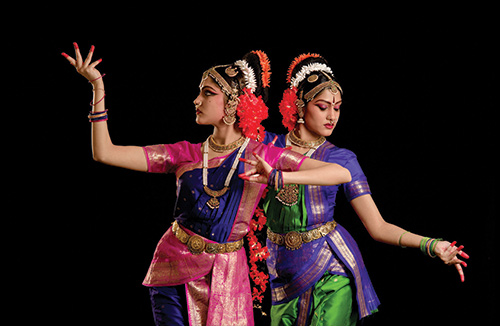Mudras in Dance

Dance is a form of expression that transcends words, weaving stories and emotions through the fluidity of movement. Central to many classical dance forms, especially in Indian traditions, is Mudras—symbolic hand gestures that convey specific meanings, emotions, and narratives. These intricate gestures are not just mere embellishments but are integral to the storytelling aspect of dance, enhancing its depth and communication.
The Origin and Significance of Mudras
The term Mudra comes from the Sanskrit word meaning "seal," "mark," or "gesture." These hand positions are a cornerstone in various disciplines such as yoga, meditation, and dance, each with its unique significance and purpose. In the realm of dance, Mudras serve as a silent language that dancers use to articulate stories, emotions, and spiritual concepts.
Mudras in Indian Classical Dance Forms
Indian classical dance forms like Bharatanatyam, Kathak, Kathakali, Odissi, and others are rich with Mudras. These gestures are meticulously codified and have been passed down through generations, ensuring that the stories and traditions they represent remain alive.
Bharatanatyam
In Bharatanatyam, one of the oldest and most popular classical dance forms, Mudras are known as Hasta Mudras. They are categorized into two types:
- Asamyuta Hasta (Single-hand gestures): These involve one hand and are used to denote objects, animals, gods, and other elements. Examples include Pataka (flag), Ardhachandra (half-moon), and Mayura (peacock).
- Samyuta Hasta (Double-hand gestures): These involve both hands and are often used to depict more complex ideas and narratives. Examples include Anjali (salutation), Kataka Mukha (holding a garland), and Shivalinga (Lord Shiva).
Kathak
Kathak, known for its intricate footwork and expressive gestures, also employs Mudras extensively. The Mudras in Kathak are like those in Bharatanatyam but are adapted to suit the dance's narrative style. These gestures tell stories from Indian epics, mythology, and folklore.
Kathakali
Mudras, or hand gestures, play a crucial role in Kathakali, a classical dance-drama form from Kerala, India. They are essential for narrating stories from Hindu epics like the Mahabharata and Ramayana, helping to convey complex emotions, narratives, and dialogues. Different mudras assist in portraying various characters, their emotions, and actions. Kathakali mudras form a symbolic language that can be interpreted by audiences familiar with the dance form, adding depth and richness to the performance.
Odissi
Odissi, originating from the eastern state of Odisha, is characterized by its fluid movements and sculpturesque poses. The Mudras in Odissi are known as Hasta Mudras or Mudras. They play a vital role in depicting various characters, emotions, and events. Commonly used Mudras include Pataaka (flag), Tripataka (three parts of a flag), and Ardhachandra (half-moon).
NEED FURTHER HELP?
If you've a question about Daily Mudras in general or your
mindfulness
practice in particular kindly contact us at